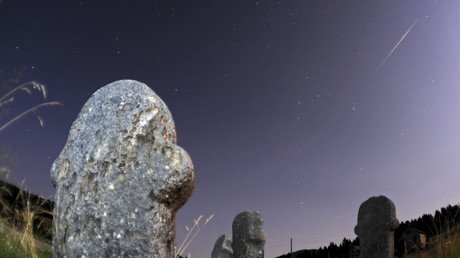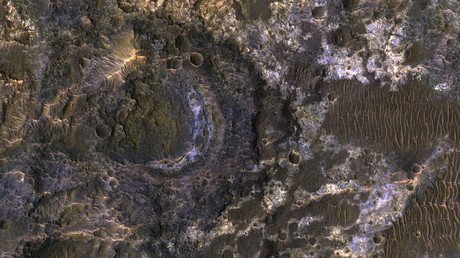‘Potentially hazardous’ asteroid bigger than Golden Gate bridge hurtles towards Earth

An asteroid bigger than the Golden Gate Bridge is careering toward Earth at breakneck speed. What’s even more alarming is that experts admit it’s “potentially hazardous” to our world.
Astronomers have been following asteroid 2017 VR12 since it was detected in November last year. NASA says that the enormous space rock will shave past our planet in the early hours of Wednesday morning.
Measuring up to 470 meters (1,542ft) in diameter the rock is travelling through space at 14,093mph (22,680kph). Because it will come so close to Earth and is big enough to cause significant damage, if it were to strike, the Minor Planet Center designated the asteroid as “potentially hazardous.”
Apollo-type PHA 2017 VR12. Diameter 230-510m. Close approach March 7th. Distance of 0.01au. The asteroid can be seen here passing through two different star fields#SpotTheAsteroid@AsteroidDay@NEOShieldTeam@CloseApproaches@AsteroidTracker@AstronomyFMpic.twitter.com/9ShiEGJoBl
— Northolt Branch Obs (@NBObservatories) March 5, 2018
However, fear not, it will not crash into Earth, rather it will pass by at about three times the distance of the moon. It will be nearly 1.4 million km from Earth (870,000 miles) at its closest point during the flyby.
READ MORE: Space time capsules: Asteroids may hold secret to life on Earth
The asteroid is a very good radar target for professional astronomers while amateurs might be able to catch it with smaller telescopes.
Next week, a large (200-450m) #asteroid will approach earth to within 3.8 lunar distances (<1.5 million km), becoming visible in amateur telescopes later this week, reaching mag <12 at closest approach.See https://t.co/j7fUuJRXIppic.twitter.com/pe8Xtcxxbm
— Gideon van Buitenen (@giddgvb) March 1, 2018
NASA’s calculations predict it will be at least 177 years before the asteroid again comes as close to Earth as it will be on Wednesday. Ruptly will be live streaming the close encounter with the asteroid through Virtual Telescope's super high-powered telescope.
Like this story? Share it with a friend!














